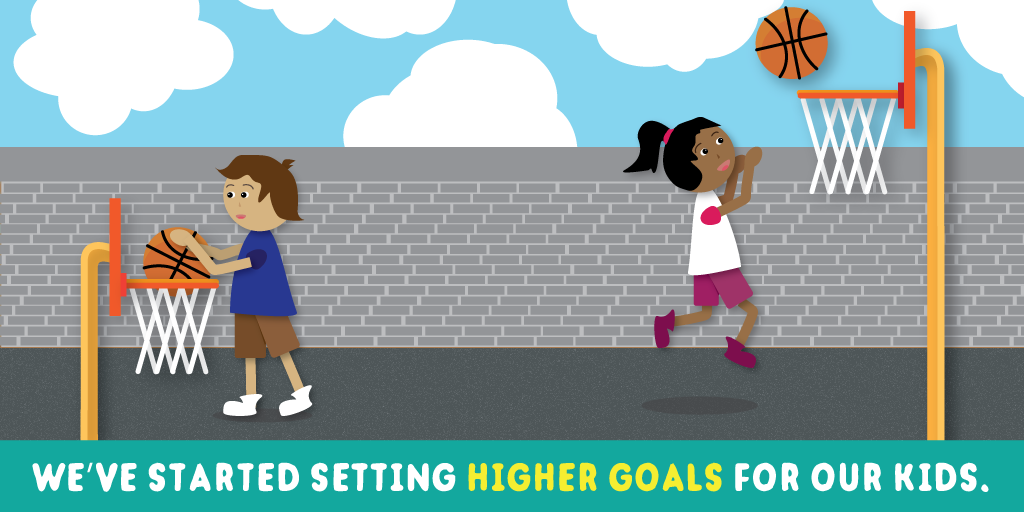New York Scores Are In

August 12, 2015
This morning the New York State Department of Education released the 2015 statewide scores which showed “slight proficiency gains for ELA and Math.”
Chris Minnich, executive director of the Council of Chief State School Officers (CCSSO), released the following statement about the findings:
“New York has been a leader in raising the bar for all students to better prepare them for college and careers. We see consistently across the country that this is hard work, and one year’s scores do not tell the complete story. I am encouraged to see New York’s commitment to reach these higher academic standards and ensure students gain the skills and knowledge they need to be successful after high school. This year-end assessment is an important measure but just one measure parents, teachers and policymakers can use to see the progress all children are making and identify areas to address in the coming year.”
The state also released the opt-out numbers state wide sharing that: “about 20 percent of eligible test takers did not participate in these tests and did not have a recognized, valid reason for not participating.”
High Achievement New York (HANY) leaders have released a response to these results, congratulating New York students on their progress but adding disappointment about the motives of the opt-out movement:
“Opt outs in such concentrated areas and among a concentrated segment of lower performers outside of the State’s cities are bad not just for the children who did not take the assessments – and therefore do not have a year-to-year guide on their college and career readiness – but also skewed the results across the state by denying an accurate year-to-year picture of New York’s progress on the assessments.”
Despite the opt-out movement’s “misguided efforts,” HANY leaders add: “higher standards and the assessments that measure them are taking root in New York in rising scores, improving graduation rates and most important, teachers and students growing more comfortable with them in the classroom.”
While the improving scores from the past two years still appear much lower than previous years’ outcomes with the old assessments, it is important to avoid comparing the two. The expectations on the new assessments have been raised to meet the more rigorous Common Core standards and are designed to make sure students are truly college- and career-ready. These new assessments are a much truer and precise indicator of actual student achievement than New York’s previous assessments.
New York’s academic standards and assessments may seem rigorous, but as the state’s Department of Education points out: multiple studies (including one of ours with the bipartisan group Achieve) show that “New York was the top-rated state for setting a proficiency bar that is roughly comparable and sometimes tougher to that set by NAEP,” and deem New York the nation’s top “truth teller” when it comes too academic standards. Learn more at http://honestygap.org.
As StudentsFirstNY’s Executive Director Jenny Sedlis wrote in a memo released today, the true results show there is a great deal of room for improvement:
“Today’s test results paint an honest picture of how New York’s students are doing — and unfortunately, our system is failing to educate too many children. We cannot deny the public school crisis these numbers so plainly expose. When more than two-thirds of students aren’t being taught to read and write on grade level, you have to question who this system is designed to serve. Incremental gains are not going to cut it. We need to dramatically improve teacher quality and school choices if we’re going to prepare students for college and careers.”
Update 8/13: Marc Morial, president of the National Urban League also expressed disappointment with the opt out numbers, telling the New York Times: “As much as people may not like testing, it’s the only way available for us to document and to hold schools and school districts accountable…We can’t close the achievement gap unless we know what it is and where it is and how big it is.”
About the Collaborative for Student Success
At our core, we believe leaders at all levels have a role to play in ensuring success for K-12 students. From ensuring schools and teachers are equipped with the best materials to spotlighting the innovative and bold ways federal recovery dollars are being used to drive needed changes, the Collaborative for Student Success aims to inform and amplify policies making a difference for students and families.
To recover from the most disruptive event in the history of American public schools, states and districts are leveraging unprecedented resources to make sure classrooms are safe for learning, providing students and teachers with the high-quality instructional materials they deserve, and are rethinking how best to measure learning so supports are targeted where they’re needed most.

